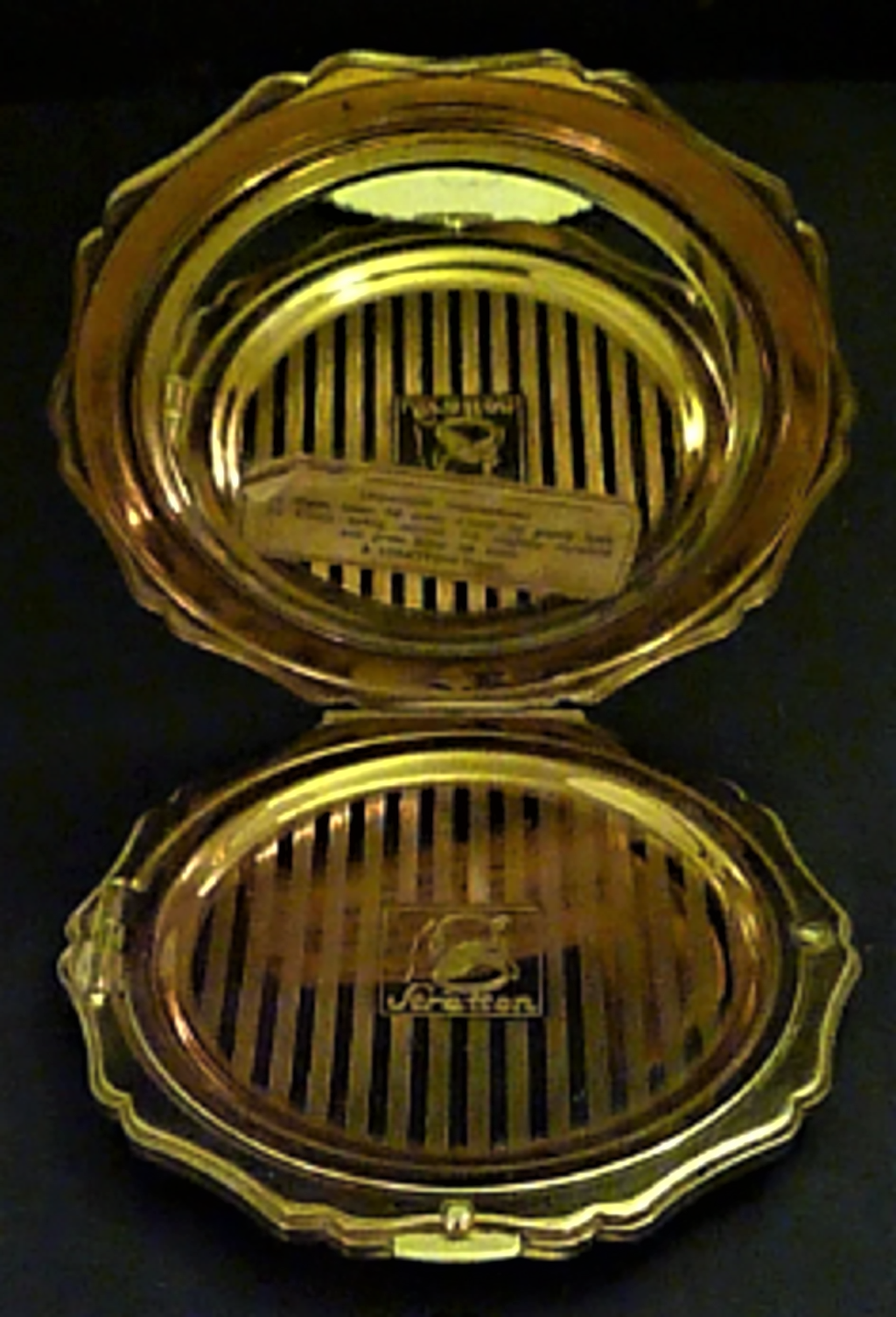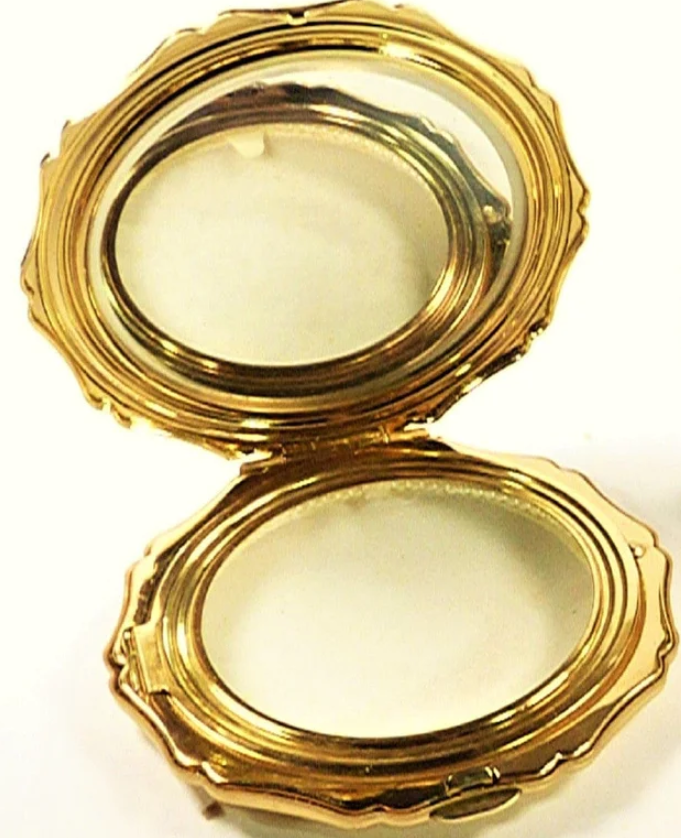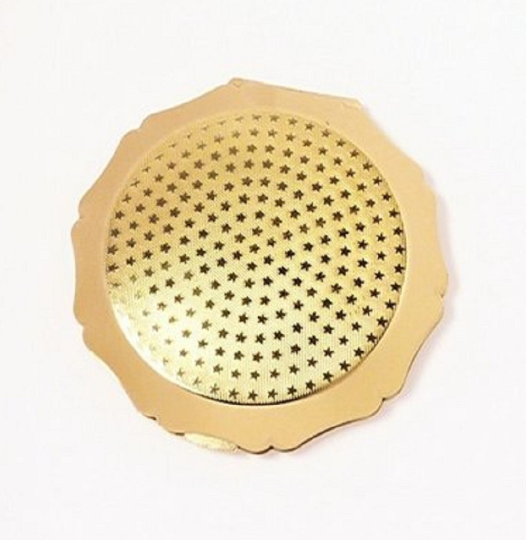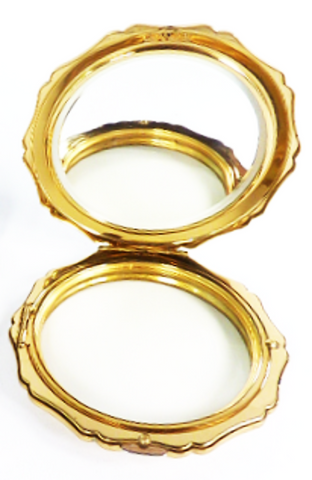#Stratton
.
The luxurious vintage Stratton powder compact featured above is embellished with a delightful enamel decoration.
At the time this accessory was crafted the makers described this lid decoration as:
Jewel design on black enamel background.
This pattern was also available on a white enamel background.
Later on, the makers renamed this design Indian print.
The Stratton Queen Convertible shown above was one of the earliest examples of this model. It dates to the late 1950s. This compact is fitted with the original bevelled mirror.
Bevelled mirrors were more costly to produce and it is unusual to find this model with one such type of mirror.
However, it does make sense, as the early Queen Convertible model superseded the rare Queen model which was fitted with bevelled mirrors.
The rare Stratton Queen model was only known to be available from 1957 – 1958.
The Stratton Queen Convertible model first known year of availability was 1957.
This model was to become one of the most popular Stratton brand compacts with a production run which lasted from 1957 – 1997.
During this time many different embellishments were applied to the lids.
EARLY QUEEN CONVERTIBLE INTERIOR
This compact shows how the Queen evolved into the Queen Convertible.
The earliest Queen Convertible models have a powder well which is a little deeper in appearance than those which were made later.
The interior cases were fitted with inner annular rings but these were of a different style than those fitted in the later models.
They cover less of the powder well.
The mirror has a bevelled edge (not be confused with the frosted glass edges seen on some mirrors fitted in Queen Convertible compacts).

RIVETED THUMB CATCH ON EARLY QUEEN CONVERTIBLE
The early Queen Convertible model was fitted with a riveted thumb catch just like the Queen model.
A rivet is a permanent mechanical fastener. Before being installed, a rivet consists of a smooth cylindrical shaft with a head on one end. The end opposite to the head is called the tail. On installation, the rivet is placed in a hole. When the rivet is hit the tail is deformed causing it to expand to about 1.5 times the original shaft diameter, holding the rivet in place.

STRATTON QUEEN INTERIOR
The image above shows a typical interior of the Stratton Queen model. The mirror has a bevelled edge. The inner lid covers the whole powder well and the thumb catch is riveted.

QUEEN CONVERTIBLE FITTED WITH SPRUNG THUMB CATCH
Eventually the Queen Convertible model would have sprung thumb catches fitted. The spring at the back of the catch is flexible. When the outer part of the catch is pressed, the spring flexes against the interior brass wall of the fitting onto which the inner annular ring is attached. This in turn disengages the latch shown above from a lip shown at the top of the interior lid.

CIRCULAR BANDS OF GOLDEN STARS
The Queen and early Queen Convertible models have a base design as shown above. The gilding on the base is a deeper shade of gold than the later models.
This could be as a result of the gilding aquiring patina due to aging.
Whatever the cause, the golden hue is very appealing.
We believe that the the adaptation of the Queen to the Queen Convertible came about because the makers knew that they would increase their customer base if larger powder capacity models like these could accommodate both loose and pressed foundation.
As the Queen was fitted with a full inner lid it is only suitable for loose foundation powder and so it had a very short production run.
By the 1950s the newer formulations of pressed foundation had become very popular.
They had a more natural appearance than they had in previous decades and they do not spill, unlike loose foundation.
Compact manufacturers production lines reflected this demand.
View our wonderful Stratton brand collection.
Click here to learn how to date your Stratton compact.
Click here to see more historical information.
Please note that although we spend many hours each week updating or compiling new work for our historical blog section which is free to view, we do not offer an appraisal, identification, valuation or dating service to members of the public.
Sources:
Juliette Edwards’ The Stratton Identification Key




